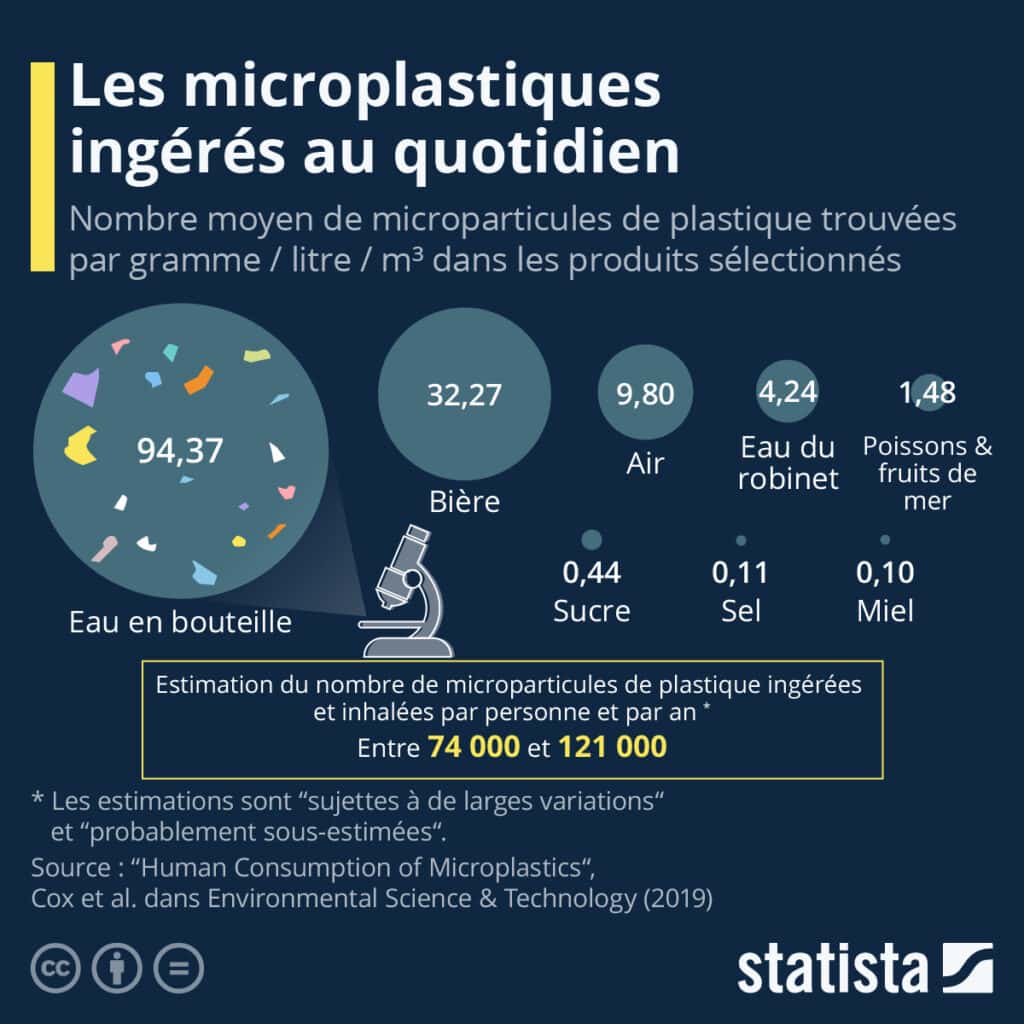[ad_1]
Researchers found significant amounts of microplastics in the testicular tissues of dogs and men. In the latter, the concentration was three times higher than that in dogs and significantly higher than that previously recorded in placental tissue of women. Experts suspect that these particles are involved in the alarming decline in the number and quality of sperm in men in recent decades.
In the last 30 years, a significant decline in the quality and quantity of sperm in humans has been observed. This decline coincides with an increase in the prevalence of various reproductive disorders, such as hypospadias, cryptorchidism, male infertility and testicular germ cell cancer.
It is assumed that these problems are related to the increase of environmental pollutants such as phthalates, pesticides and heavy metals. In particular, studies have shown that these substances can disrupt the endocrine system and affect testicular development and function.
The ever-increasing presence of microplastics in almost all environments adds another level of complexity to this environmental threat. Research has shown their presence in almost all of our organs and systems, including the bloodstream (after ingestion or inhalation). Experiments on mice have shown that these particles can even
pass the blood-brain barrier. They were also discovered in
human placenta and in breast milk, indicating worrisome fetal and postnatal exposure.
More worryingly, recently study discovered the presence of microplastics in human testes and sperm samples. In animals, their presence in the male reproductive system is associated with decreased sperm count and hormonal disturbances. Indeed, these particles interfere with biological molecules not only by their presence, but also by becoming vectors of toxic compounds such as bisphenol A (BPA).
However, despite advances in detection, significant gaps remain regarding the actual levels of microplastics in human reproductive systems, as well as their potential impacts. To find out more, researchers from the University of New Mexico (USA) used a new analytical method to detect microplastics in human and dog testicles. Dogs and humans generally share a common environment as well as certain biological characteristics.
” Compared to rats and other animals, dogs are closer to humans », explains ua
communicated from the University of New Mexico, Xiaozhong Yu, who led the study. ”
Physically, their spermatogenesis is closer to human and sperm concentration is more similar to human “, he adds. The results of the research were published in the journal Toxicological sciences.

Amounts correlated with reduced sperm counts
As part of their investigation, Yu and his team collected 47 dog and 23 human testicles. The former were obtained from shelters and veterinary clinics that performed sterilizations, while the latter were obtained from the New Mexico Bureau of Medical Investigation, which collects tissues during autopsies.
To detect plastic microparticles, the researchers chemically processed the samples to dissolve fats and proteins, then ultracentrifuged everything to isolate the plastic material.
The researchers thus discovered plastic in all samples. In dogs, the average concentration was 122.63 micrograms per gram of tissue. In humans, this amount was 329.44 micrograms per gram of tissue, almost three times higher than in dogs and significantly higher than the average concentration previously found in placental tissue.
” At first I doubted that microplastics could enter the reproductive system “Yu said.”
When I first got the dog results I was surprised. I was even more surprised when I got the results for men “.
In order to identify the different types of plastic present, the pellets obtained after ultracentrifugation were heated to 600°C and then analyzed with a mass spectrometer. Experts have identified 12 different types of plastic in dogs and humans, the most common of which is polyethylene (PE), which is commonly used to make plastic bags and bottles. In dogs, polyvinyl chloride (PVC) — commonly used in household plumbing — was also abundant.
By quantifying sperm count in dog samples, the researchers found that high levels of PVC were positively correlated with reduced sperm count. In contrast, no significant correlation was found for PE. According to Yu, the nature of the plastic makes a difference, as PVC can, for example, vector many chemical compounds that interfere with spermatogenesis and sex hormones.
Although sperm counts could not be quantified in humans (because the samples were chemically preserved), experts believe the results may be comparable to those in dogs due to common environmental factors. In addition, the average age of the human donors was 35, meaning that exposure to microplastics began decades ago, when levels in the environment were much lower than today.
“The impact on the younger generation could be a concern now that there is more plastic in the environment than ever “, says Yu.
However, unknowns remain and more research is needed to understand the extent of the long-term impact on human reproduction.
source: Toxicological sciences
[ad_2]
